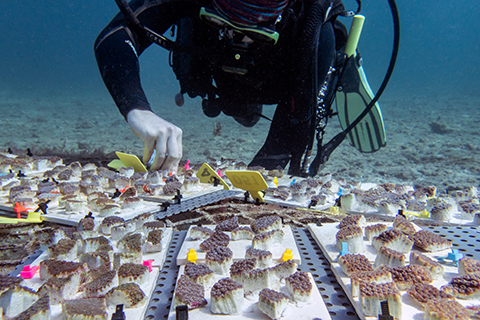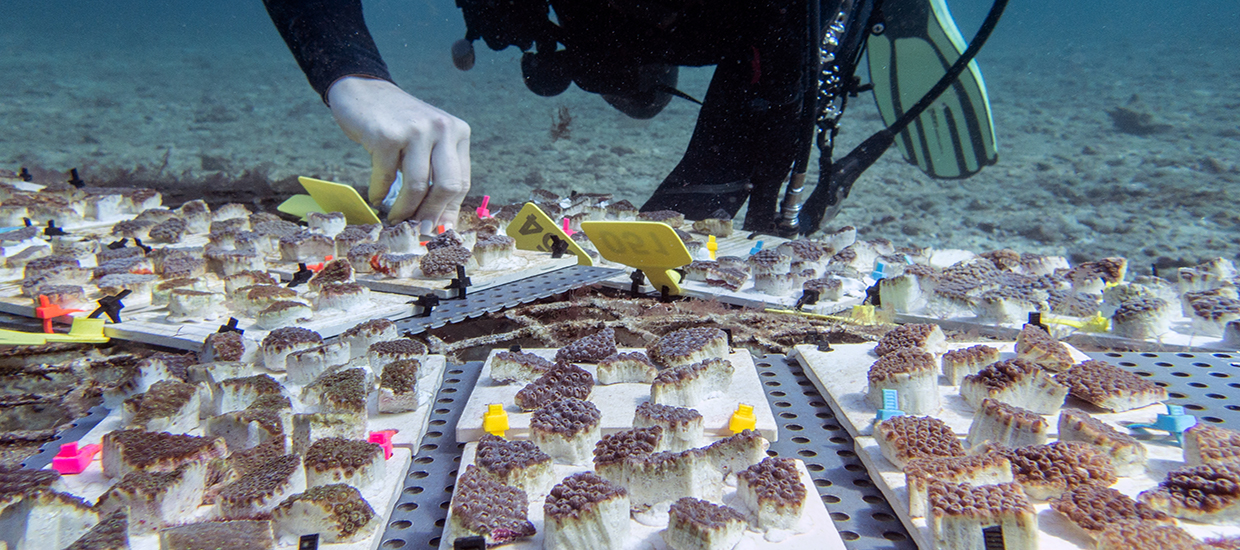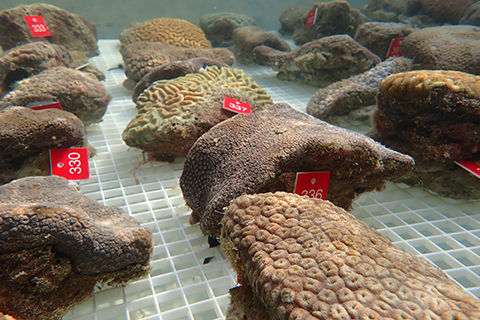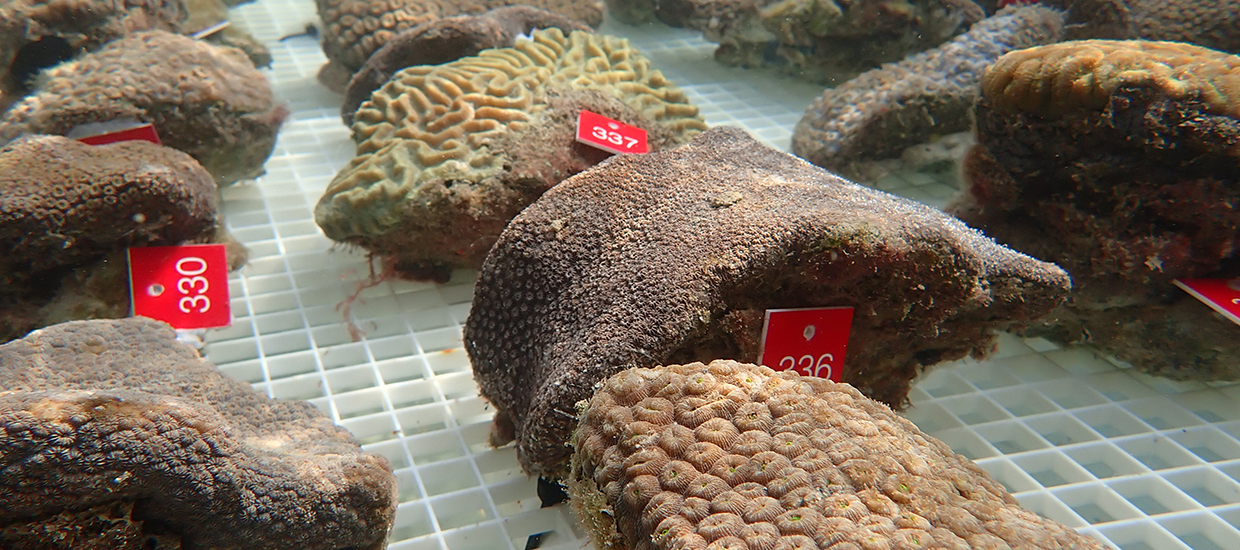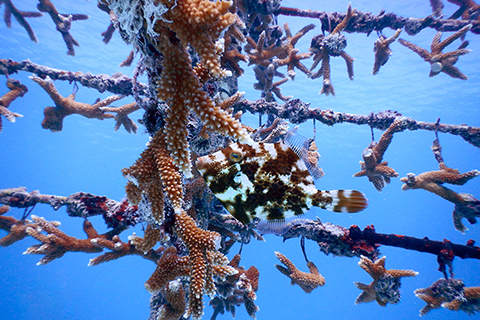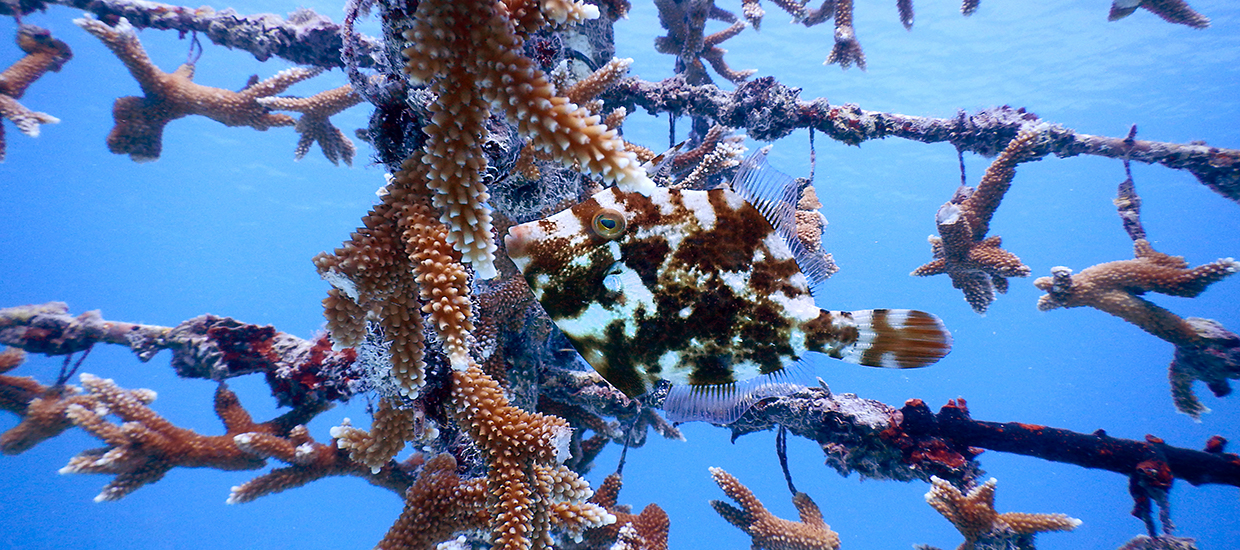Asexual coral propagation
Source adult colonies with desired characteristics such as thermotolerance, disease resistance, and/or rapid growth, propagate them in nurseries, and outplant to structures:
- Test the phenotypic traits of existing stocks and new wild collections in controlled lab experiments to select the most resilient corals for deployment
- Establish new coral nurseries in challenging, shallow, nearshore environments to screen for genotypes that perform well in these habitats
- Propagate and outplant colonies representing a diverse range of species, morphologies (i.e., branching, massive) and genotypes to X-REEFS structure
Lead: University of Miami (Diego Lirman)
Assisted recruitment
Increase the number of corals recruiting to the structure:
- Test delivery methods for known and new chemical and/or bacterial coral settlement cues, and apply them to the structure to enhance passive settlement
- Develop a coating that encapsulates live coral larvae in a hydrogel matrix that can adhere directly to the structure's surface for targeted settlement
- Actively produce coral recruits through in situ and ex situ spawning, assisted fertilization, larval rearing, and settlement for eventual deployment on engineered structure
Leads: Smithsonian Marine Station (Jennifer Sneed), Johns Hopkins Applied Physics Laboratory (Jenny Boothby), SECORE International (Margaret Miller), Florida Aquarium (Keri O'Neil)
Community enhancement
Develop a thriving benthic community that enhances the durability, resilience, and wave attenuating properties of the engineered structure:
- Culture invertebrate herbivores (i.e., gastropods, urchins) add them to the structure to control macroalgal growth
- Promote crustose coralline algae growth to enhance coral settlement and block competitors
- Synthesize and apply crosslinked polymer coatings containing quaternary ammonium salts to substrates to hinder algal attachment and colonization
- Develop means of elevating alkalinity (HCO3- and CO32-) in the diffusive boundary layer to enhance coral larval settlement success and post-settlement survival and calcification
Leads: SECORE International (Margaret Miller), Texas A & M University (Taylor Ware), University of Miami (Chris Langdon), University of Florida (Joshua Patterson), Florida Aquarium (Keri O'Neil)



